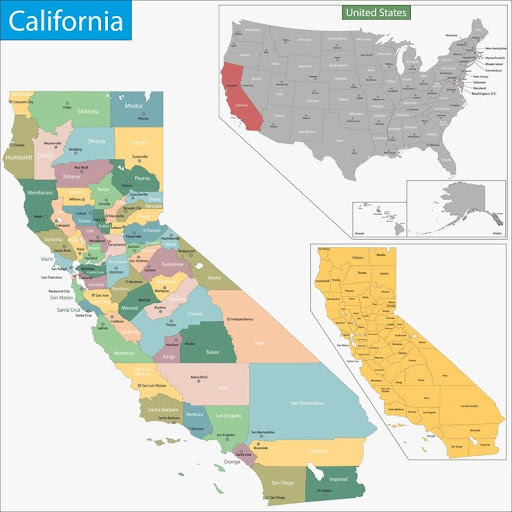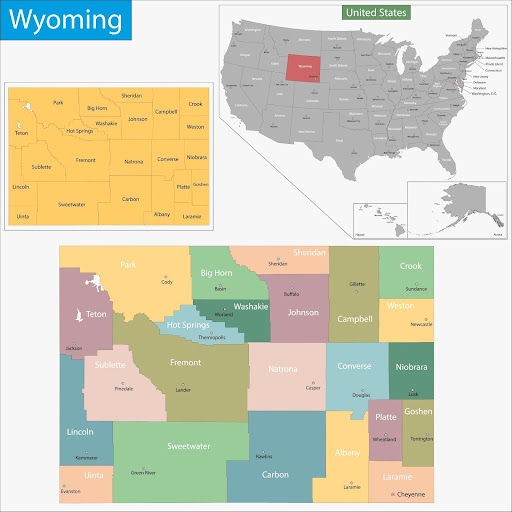Table of Contents
California’s terrain is a patchwork of fire-prone ecosystems, each with its own ignition patterns and suppression quirks. For fire investigators, this means navigating a landscape where a spark in the wrong place at the wrong time can escalate into a major incident.
Whether you're tracing the origin of a wind-driven blaze in the Sierra foothills or analyzing a smoldering burn scar in the chaparral, understanding California’s unique fire dynamics is important. This guide breaks down the state's wildland firefighting resources, offering information about agency roles, seasonal risks, training opportunities, and essential resources for investigators on the ground.
Live Incident Updates & Maps
Stay informed about active wildfires in California and related information with this tracker:
State Overview
California's geography is as diverse as its fire behavior. The state encompasses a range of ecosystems, from coastal chaparral to high-elevation forests, each presenting distinct wildland fire challenges.
In the north, the dense forests of the Sierra Nevada are prone to large, high-intensity fires, especially during dry summers. Central California's grasslands and oak woodlands can experience fast-moving fires, particularly during wind events. Southern California's chaparral-covered hillsides are susceptible to rapid fire spread, especially during Santa Ana wind conditions.
According to CAL FIRE, in 2024, California experienced 8,024 wildfires that burned over 1 million acres, destroyed 1,716 structures, and resulted in one civilian fatality.
Wildfire Season Timeline
California's wildfire season varies by region but generally follows this pattern:
- Northern California: Fire season typically peaks in the summer, with activity continuing until late fall when Pacific moisture returns.
- Southern California: Fire season often peaks in late spring through early fall. Offshore wind events, such as Santa Ana winds, can lead to large fires year-round, with heightened frequency in the fall.
Understanding these seasonal patterns is essential for fire investigators when analyzing fire causes and behavior.
Key State Agencies Involved
Wildland fire response in California is a collaborative effort involving state, federal, and local entities. Each agency has defined responsibilities, but they often work together to manage fire incidents effectively.
- California Department of Forestry and Fire Protection (CAL FIRE): The lead state agency for wildland fire management. CAL FIRE oversees fire detection, suppression, prevention programs, and public education. The agency maintains in-house fire command and firefighting capabilities, including engines and specialized crews.
- U.S. Forest Service (USFS): Manages fire response in national forests, including the Angeles, Los Padres, and Shasta-Trinity National Forests.
- National Park Service (NPS): Oversees fire management in national parks, such as Yosemite and Sequoia-Kings Canyon, and collaborates with other agencies for coordinated response.
Local Wildland Firefighting Resources
California has a wide range of resources available to fight wildland fires. Here’s a list of the local response agencies, important websites, and phone numbers.
List of Local/State/Federal Fire Response Agencies
Contact Numbers and Emergency Links
Training & Volunteering
California offers a deep bench of resources to build both foundational skills and specialized expertise in wildland firefighting. From NWCG-certified academies to on-the-ground mentoring with seasonal crews, the state has built one of the most expansive fire training ecosystems in the U.S.
NWCG-Approved Academies and Centers
- CAL FIRE Training Center: Provides year-round training in fire prevention and protection, emergency response, law enforcement, and enhancement of natural resource systems.
- California State Fire Training (SFT): Establishes, develops, and delivers standardized training and education for the California fire service.
- Other Academies & College Programs: Community colleges such as Shasta College, Santa Rosa Junior College, and College of the Siskiyous offer SFT-accredited programs that include live fire training, simulation labs, and field rotations. These programs often serve as feeder pipelines for both local departments and CAL FIRE seasonal roles.
Volunteer and Seasonal Training Opportunities
California’s fire footprint is massive, and local agencies rely heavily on trained volunteers and seasonal firefighters to respond quickly and effectively, especially during peak season.
- Emergency Firefighter (EFF) Program: This CAL FIRE-run program recruits and trains Emergency Firefighters to support initial attack, mop-up, and logistical operations during fire season. Training includes basic wildland fire safety (S-130/S-190), pump operation, and hand tool use. Many EFFs move on to become permanent staff or qualify for entry into full-time investigator roles.
- Volunteer Firefighter Training (Local + State Partnerships): Volunteer fire departments across the state often partner with CAL FIRE for Red Card certification, burn training, and response drills. These partnerships are crucial in rural counties where VFDs are often the first boots on the ground. If you're an investigator, knowing the training level of the local crew can provide context on initial suppression tactics or scene preservation.
- Wildland Firefighter Apprenticeship Program (WFAP): Jointly managed by the USFS and the Department of the Interior, this program offers paid, multi-year apprenticeships for individuals pursuing wildland firefighting careers. WFAP graduates are increasingly involved in prescribed burn support and are often detailed on investigative assignments as observers or evidence techs.
Stay Informed on California’s Wildland Fire Landscape
California's wildland fire environment is complex and evolving. Understanding the state's unique challenges will allow you to investigate efficiently. Use the resources and training opportunities available to stay informed and prepared.
Staying ahead means more than knowing where the fires are. It means understanding how and why they behave the way they do. From red flag warnings to burn permit updates, staying plugged into real-time data and agency protocols will give you the edge when it matters most.
FAQs
How to Report a Wildfire in California?
If you spot a wildfire, immediately call 911. Prompt reporting is crucial for rapid response and containment.
Can I Do a Controlled Burn in California?
Yes, but with regulations. Before conducting a controlled burn, you must obtain a burn permit from CAL FIRE. Permits are typically required during the fire season. Contact your local CAL FIRE office or visit fire.ca.gov for more information.










